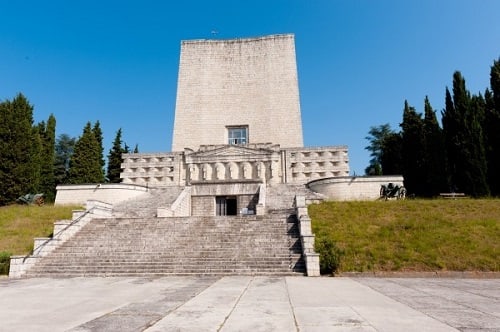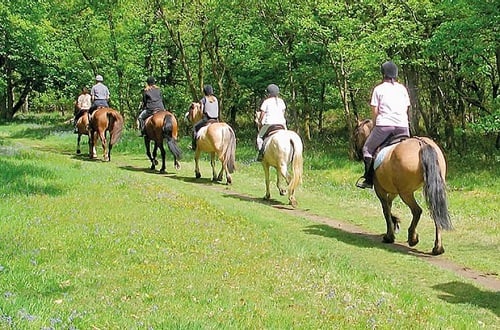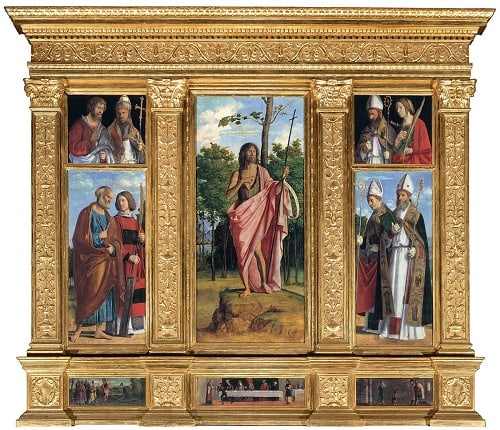Montebelluna was an important Venetian-ancient settlement, located at the center of the routes between Piave and Brenta. There are still many archaeological finds in the area. Since the year 1000 the city, thanks to its market, became the most important emporium in the foothills and pre-Alpine regions. Strolling through the streets of the center, the Town Hall and the nearby palaces have a nineteenth-century imprint and on their walls the frescoes tell of the heroes of the Italian Risorgimento. Among the sacred buildings, the modern Cathedral, along the main street, in an eclectic style, is worth mentioning.
To be seen:
1) Scarpone Museum – at Villa Zuccareda Binetti. Unique museum in Italy, it collects the history of sports footwear.
2) The squares of the historic center. They were born in the second half of the nineteenth century in order to bring the market, which had previously been located in the hilly part, to the plain.
3) Church of Santa Maria in Colle. The sacred continuity of the site is testified since the Paleoveneto period. It was built in the seventeenth century based on a design by Giorgio Massari and dedicated to the nativity of the Virgin. Inside you can see a beautiful “Pietà” by the sculptor Giuseppe Bernardi, master of Canova, and the “Glory of Paradise”, a wonderful fresco by Francesco Salvator Fontebasso from 1760.
4) Museum of Natural History and Archeology at Villa Biagi. The museum visit itinerary starts from the origin of the universe, with the astronomy room, to then arrive at the origin of life and the zoology rooms. The preparation of the archaeological section includes materials from the prehistoric, protohistoric and Roman periods. The finds related to the Paleoveneti are very precious. In the garden, the astronomical observatory allows for guided observation of the celestial vault upon reservation.
5) Villa Correr Pisani – Historic 17th century palace of Montebelluna built by Angelo Correr, Procurator of San Marco. An integral part of the villa is the chapel that houses the “Assumption of the ceiling” attributed to the young G.B. Tiepolo. The church is now a theatrical hall for cultural events.
6) Church of SS. Lucia and Vittore (18th century) Note the fresco depicting the Virgin of the Assumption supported by Angels in flight by G.B. Tiepolo, his first fresco. The Church also houses other interesting frescoes including that of Giambattista Canal with the Coronation of the Virgin and the Glory of Saints Lucia and Vittore.
7) Archaeological site of Posmon – includes an important necropolis from the Paleovenetian and Roman ages, as well as other finds from the Roman period.
8) Villa Pola – In Posmon, in the barchessa of Villa Pola, a 15th century fresco portrays Charlemagne and his paladins.
To see in the surroundings
Il Montello – Il Montello is a place where nature arouses emotions and surprise, characterized by the beauty of the landscapes. Despite the massive intervention of man, the Montello wood still has considerable naturalistic interest. Today it is an ideal place for the practice of various sports: cycling, mountain biking and hiking are at home. The cycling ring offers routes suitable for everyone: from the ride immersed in gentle landscapes to the various difficulties offered by the 21 holds (the roads that go up and down the hill, parallel to each other). There is no shortage of stables for horseback riding and even the golf course. But the area is waiting to be discovered, and not just on the surface! In fact, it is worth noting the important network of caves, about 70 explored, which also reach notable developments. Worth mentioning is the Busa di Castel Sotterra which opens near intake 10: explored for over 7 kilometers, it is the third known cave of this type in the world. Also interesting are the Tavaran cave, the Bus del Bo di Pavei and the Bus del Fun. The visit is possible appropriately guided by experts and with the necessary equipment.
Visit to the places of the Great War – There are numerous sites in the area linked to the tragic event, here in fact the Battle of the Solstice took place which led to the end of the First World War: the Monument-Ossuary of Nervesa della Battaglia, the monument to Francesco Baracca, the English cemetery in Giavera del Montello, the observatory of the King offer reasons of interest. But monuments, memorials, tombstones are visible almost everywhere. A little curiosity: in memory of that period, in Santa Croce, every day at 3.00 pm, the church bells toll while intoning “the Hymn of the Piave”. A particular note deserves the Abbey of Sant’Eustachio. In fact, some sites retain such evident traces of that historical period as to arouse almost emotion. This is why the stripped-down beauty of the ruins that emerge from the vegetation make it a sensational attraction. The abbey dates back to the early 11th century. Here Monsignor della Casa wrote the ‘Etiquette’. It can be reached with a short walk, starting from the square of the church of San Giovanni Battista in Sovilla di Nervesa della Battaglia.
Montello and Asolo Hills Wine Route – Across an idyllic view the road follows a simple and linear path. There are many wineries open for the traditional tasting stops of the excellent DOCG and DOC productions. How not to mention the Prosecco DOCG of Montello and the Asolo hills. But other excellent black wines are also produced in the area such as Merlot, Cabernet Sauvignon, Rosso del Montello, Raboso, all DOC and DOCG. Furthermore, Montello is renowned for its restaurants, farmhouses and taverns that offer excellent typical products: from the tasty IGP potato to the typical soppressa, passing through the famous mushrooms and other typical dishes of the area.



